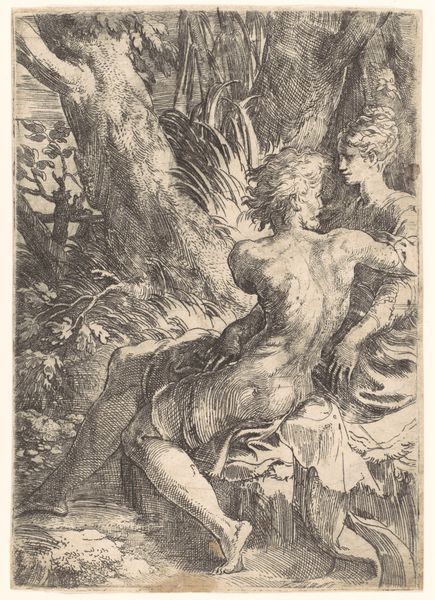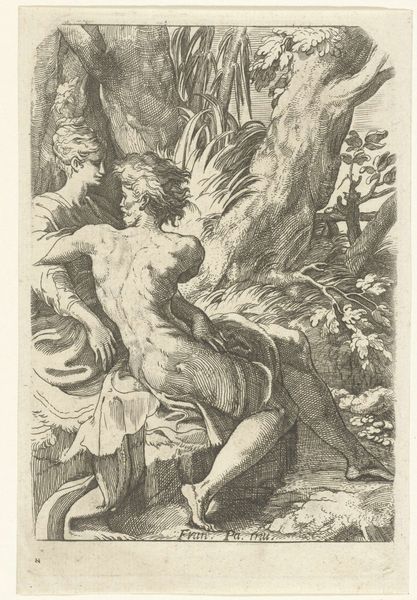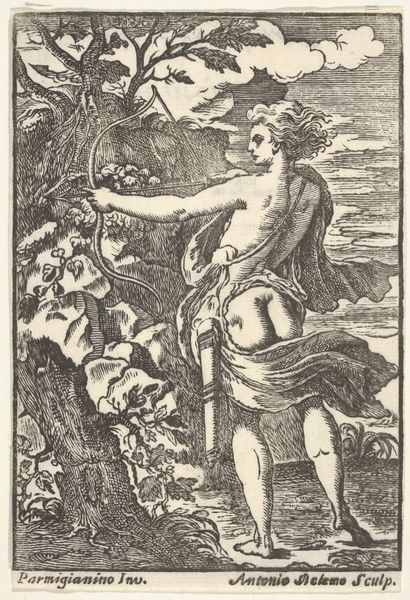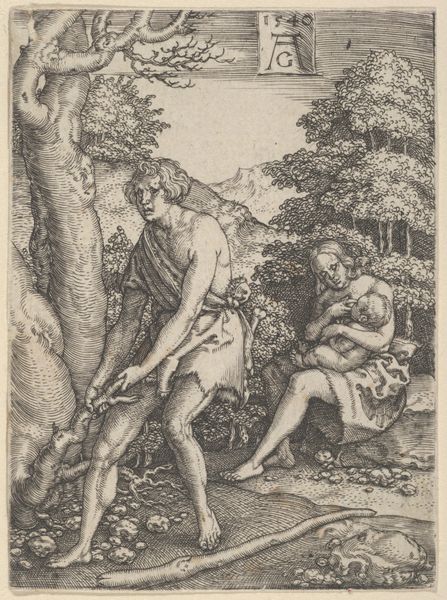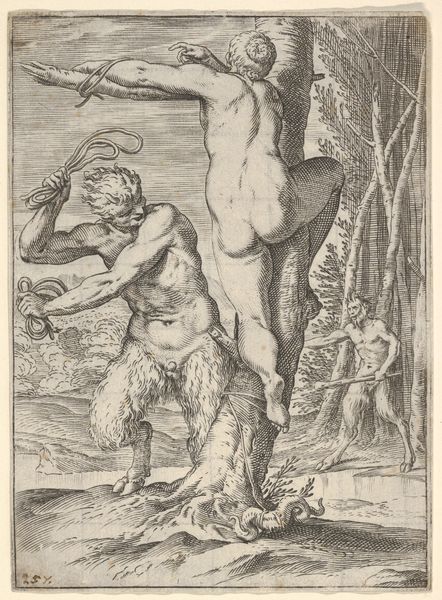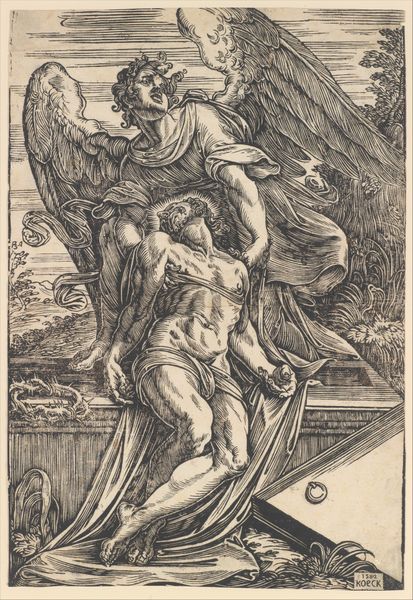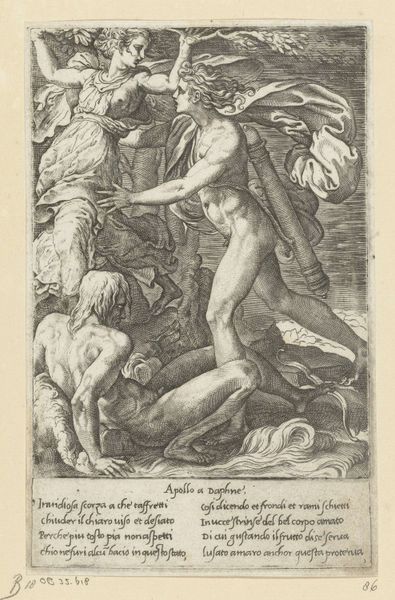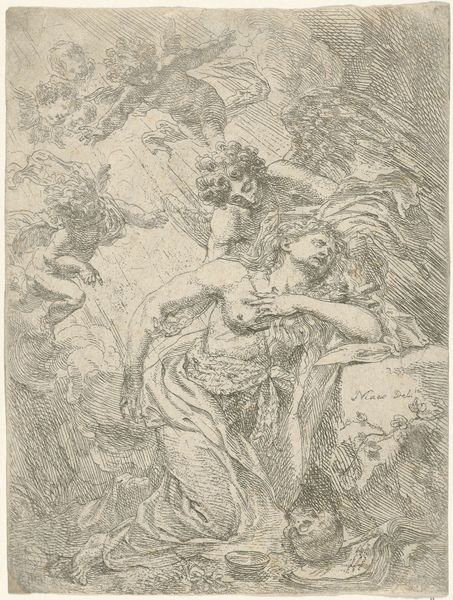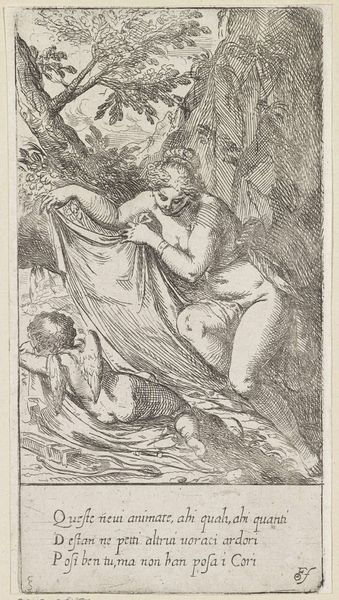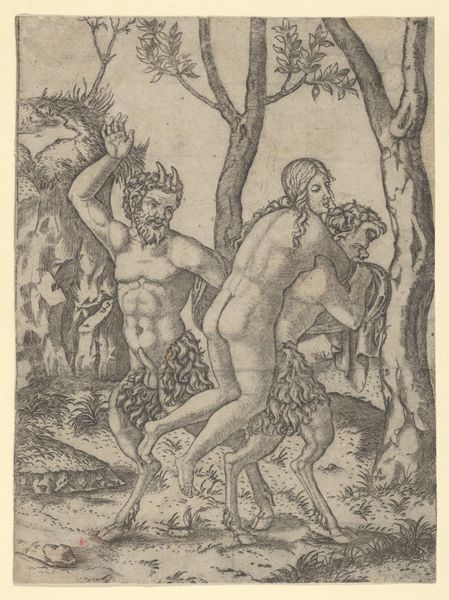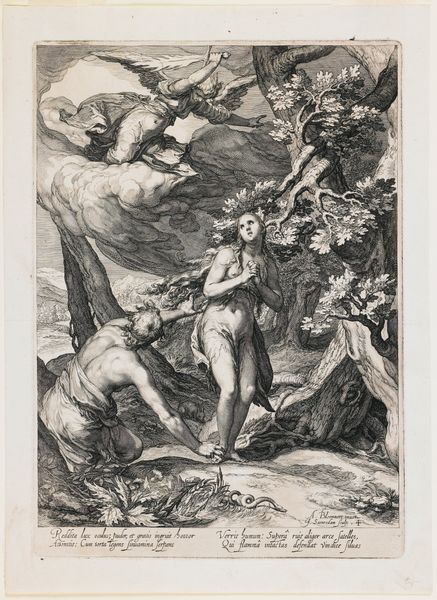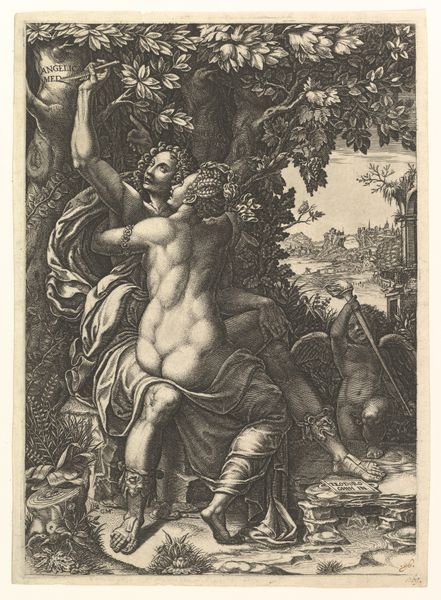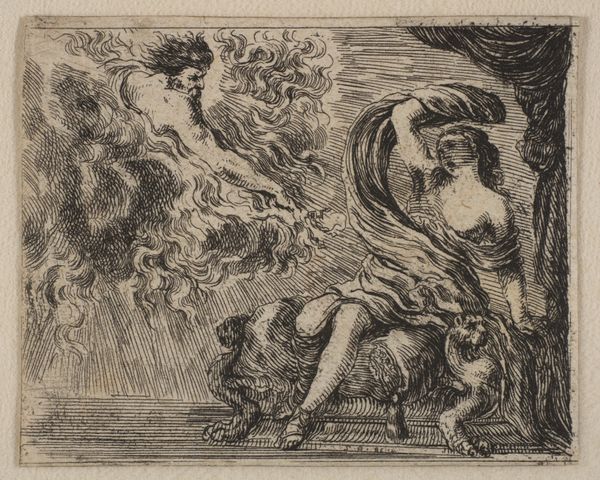
drawing, print, engraving
#
drawing
#
ink drawing
#
medieval
# print
#
landscape
#
figuration
#
11_renaissance
#
nude
#
engraving
Dimensions: sheet: 5 7/8 x 4 1/16 in. (14.9 x 10.3 cm)
Copyright: Public Domain
Editor: So, here we have "The Lovers," a 16th or 17th-century engraving at the Met, by an anonymous artist. It’s interesting how the lines create these textures of skin and foliage, but something about it feels…stiff. How do you interpret this work? Curator: Considering this piece through a materialist lens, the first thing that strikes me is the process of its creation. This is an engraving, so let's consider the labour involved: the physical act of cutting into a metal plate. What kind of social structures enabled that labour? Who would have been consuming these prints and for what purpose? Editor: That’s a great point. I hadn't thought about the engraver’s physical effort. Does the composition—the figures in this somewhat wild landscape—tell us anything about who might be purchasing or consuming these? Curator: It suggests a certain level of education and engagement with classical themes. Are these "lovers" a direct representation, or is this print potentially participating in a larger discourse about gender roles or morality within the culture it was produced? The material constraints and choices inform those dialogues. What are the figures wearing and what social conditions gave rise to the means and style of the costumes we see represented here? Editor: I see. It makes me realize I often overlook how the very act of making art is tied to its culture and its reception, more than just an artist expressing themself. Curator: Precisely! By understanding production and consumption, we get a clearer picture of its place in society. Editor: Well, thanks. It really highlights the value of thinking about these older works with an emphasis on class and historical context of labor.
Comments
No comments
Be the first to comment and join the conversation on the ultimate creative platform.
